The Black Phoebe is a familiar and confiding black-and-white flycatcher that can be found as far north as northern  California and as far south as northern Argentina. One of three birds in the genus Sayornis (the others are Eastern Phoebe Sayornis phoebe and Say’s Phoebe Sayornis saya), Sayornis nigricans is common across most of its range, is tolerant of people, and is almost always found near water. According to BirdLife International the
California and as far south as northern Argentina. One of three birds in the genus Sayornis (the others are Eastern Phoebe Sayornis phoebe and Say’s Phoebe Sayornis saya), Sayornis nigricans is common across most of its range, is tolerant of people, and is almost always found near water. According to BirdLife International the 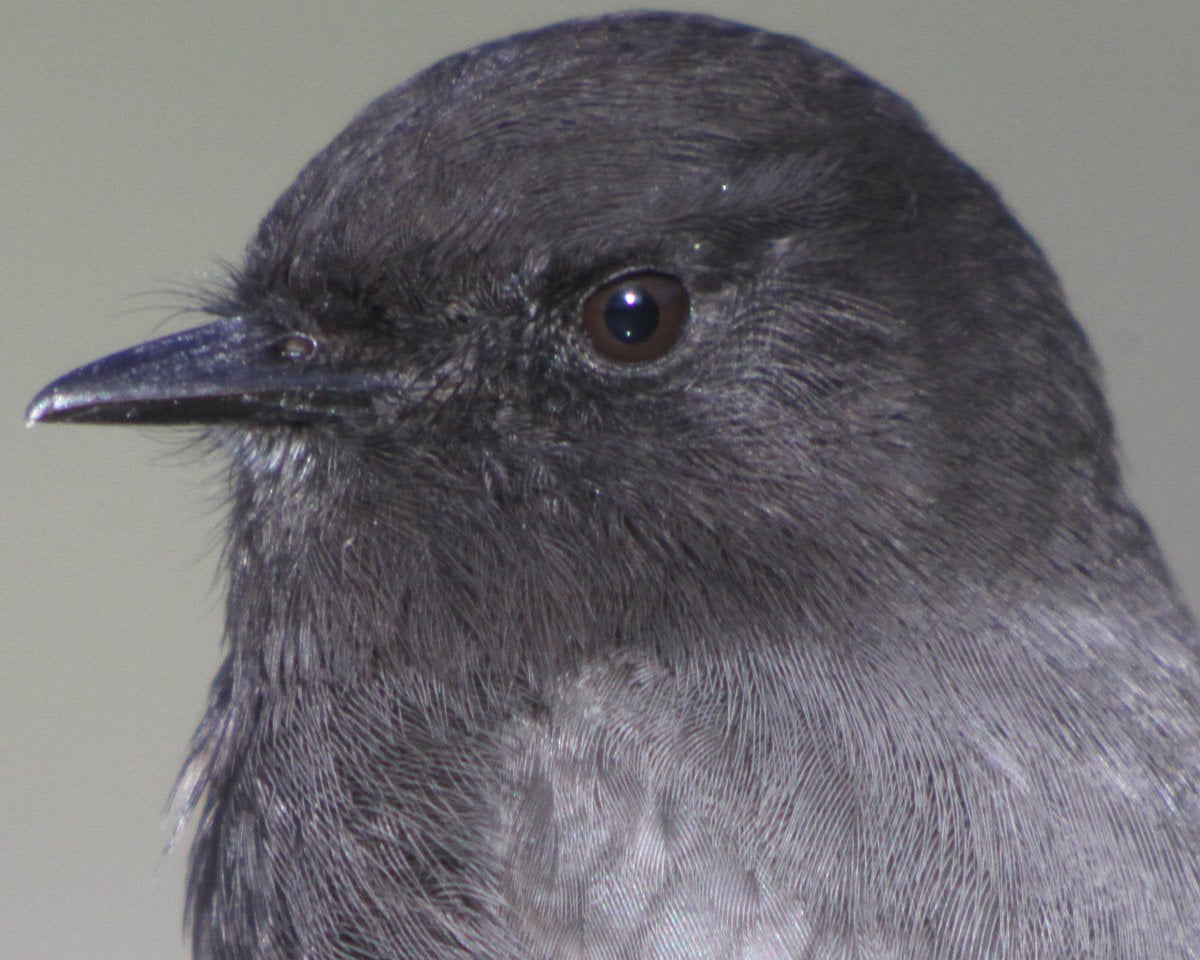 Black Phoebe is a Species of Least Concern because of its large and increasing population and its huge range.
Black Phoebe is a Species of Least Concern because of its large and increasing population and its huge range.
Black Phoebes often perch on or near the ground before sallying forth on flycatching attempts and also perch on rocks in streams or ponds to use a flycatching base. Sometimes they will actually grab fish or invertebrates from beneath the surface of the water. Whatever they are catching they are a joy to watch and it is nice to know that they are one bird about which conservationists and birders need not be concerned. I hope you enjoy these shots of Black Phoebes taken in December of 2010 and January in 2011 in various locations in southern California.* Some of the images will be enlarged if you click them.
…
*A couple of these shots were used in a previous 10,000 Birds blog post.
…


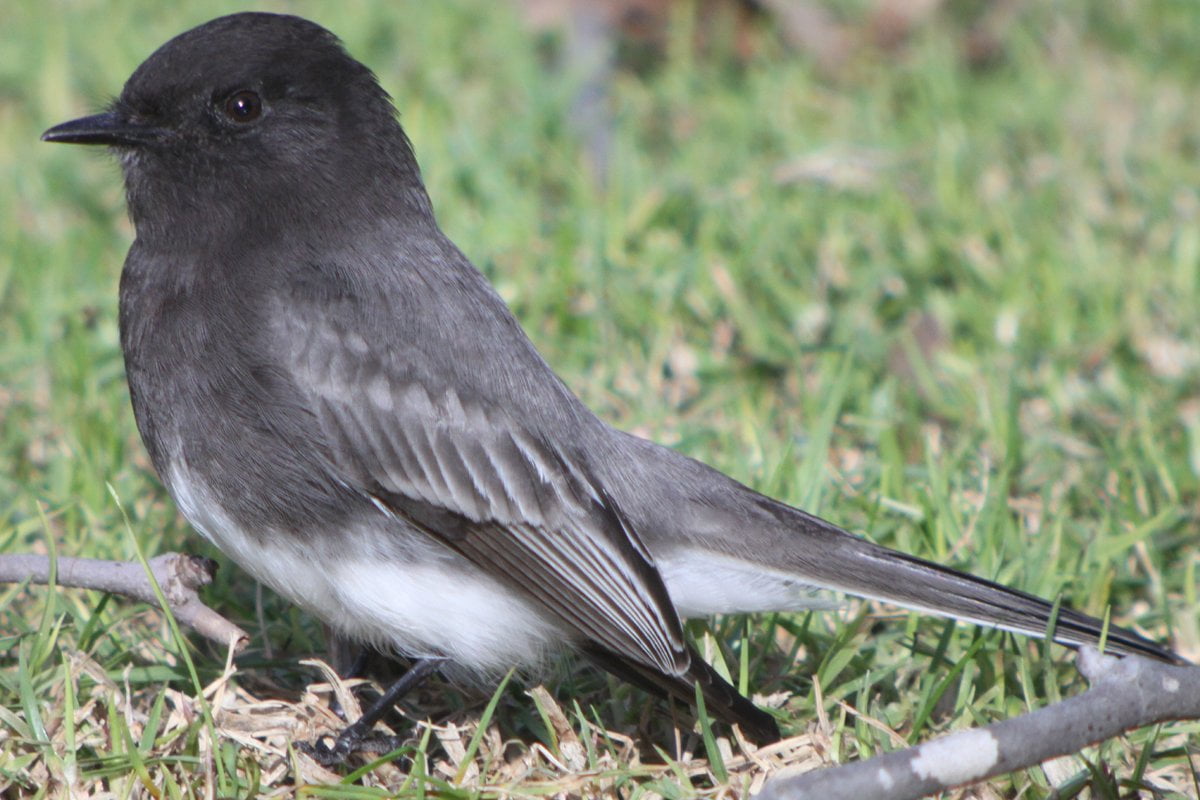
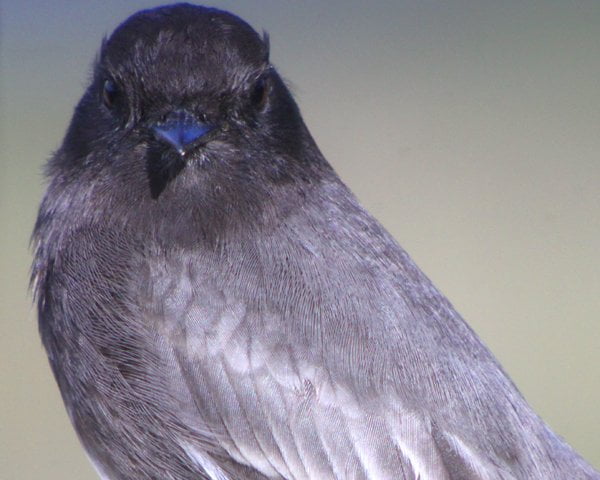
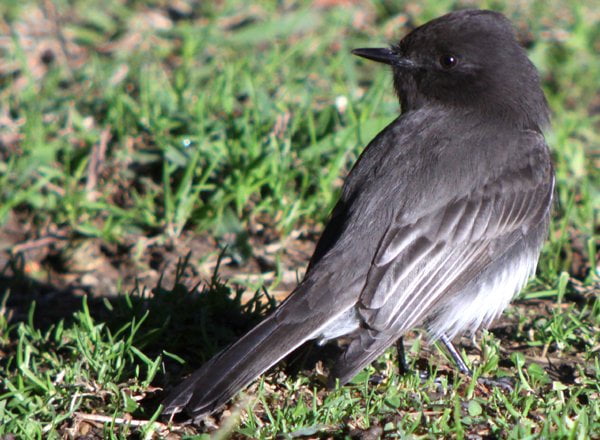
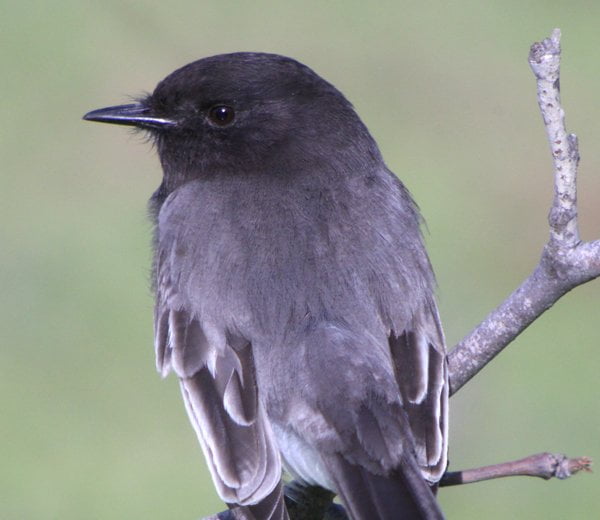
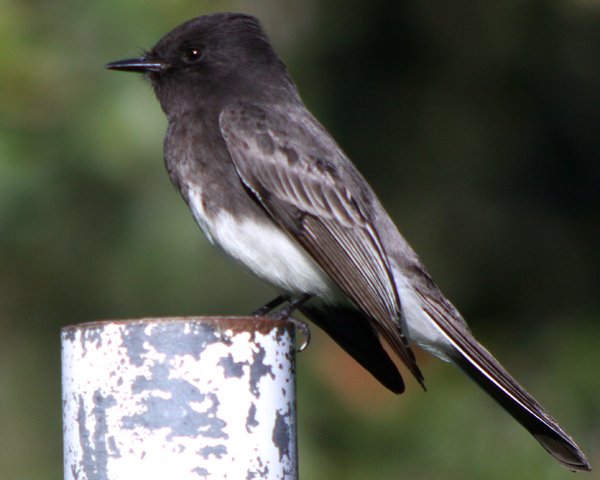











A very sweet bird with a gentle, refined look about it. I get become very excited when I see our Eastern Phoebes. There’s just something about their statuesque form when they are perched atop a fence post. Thanks for the information. A Black Phoebe would be a lifer for me. Hope to travel out your way someday. ~karen
Love me some Black Phoebe. They are such cheerful, friendly birds.
We’ve had this little bird in our backyard in Mission Viejo CA for 10 years now. Never knew its name. Its funny, but every year it returns to our yard and sits every evening before sunset in the exact same spot on the back fence. Quite a creature of habit. I havent been able to locate the nest yet. Thanks for all the Phoebe info
I just discovered this interesting and charming species. It’s worth noting that their range extends into the extreme southern Oregon coast, where I observe mine.
I saw my life Black Phoebe in the Texas Hill Country. I was on a field trip staying at Neal’s Cabins (now Neal’s Lodges) near Concan. We were told to go down along the stream and watch for them, and for green kingfishers, so looking along tunnels of green over clear water dashing around rocks for awhile before seeing the bird is a big part of the memory.
From your posts I feel that black phoebes aren’t found in my area. I live in The eastern panhandle of West Virginia and up until today we’ve enjoyed watching one phoebe hatch 4 young-uns. They left my back porch where they nested on top of my porch ceiling fan today. During the nesting, there were sometime 4 adult phoebes hanging around the apple tree next to the porch. FYI, I’m enjoying your website.
@Tom: You are likely seeing Eastern Phoebes…though, if they really are Black Phoebes and you can get a picture you should be ready to be inundated with birders!
For the past few years there was one, he seems to be sociable with me (as in every time I go to the backyard to garden etc, I kindly named him Mr. Bird which he seems to respond to when I call it), several weeks ago, he introduced me to his female companion and their little one! which now hangs out with me regularly. My neighbor says of me “jeez I bet if you were to call a rat he’d pop out his head to say hello!” These birds are so adorable and I feel lucky to have been included in their little family. 🙂